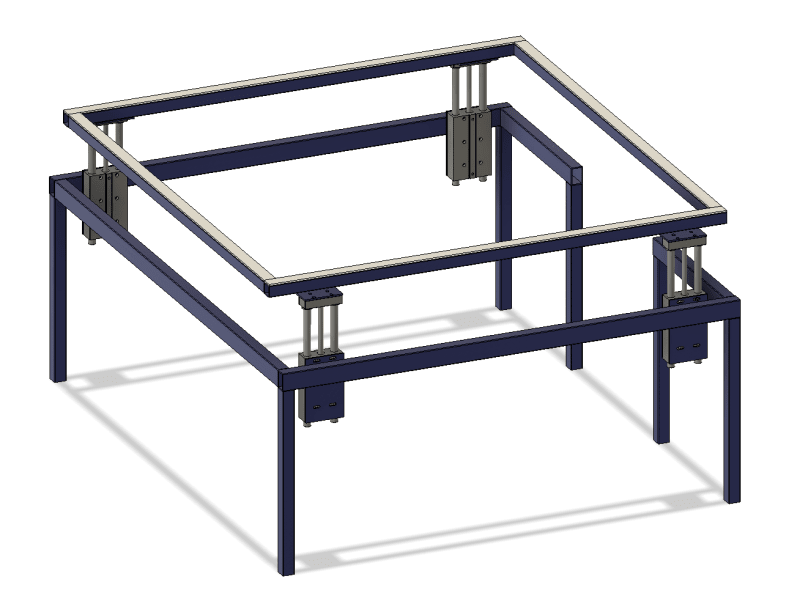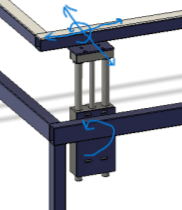You have a classic situation here. Misunderstandings the functions of linear bearings and fluid actuators contribute to poor system design. Two bad assumptions here:
1) The motions of multiple "uncontrolled" pneumatic actuators that appear identical will be synchronized. Wrong.
2) Linear bearings prevent binding.
1) The motion of any individual pneumatic actuator is affected by the timing of the signal, the amount of input pressure, the setting of any flow-restrictive speed control device, and the amount of internal friction. In a multi-cylinder system ANY mismatch in any of those parameters will result in mismatched speeds.
2) Linear bearings CANNOT overcome mismatched actuator motions, or the resulting binding condition.
Pneumatic actuators should be used as ACTUATORS only. Not SYNCHRONIZERS. They can provide the force, but they are very poor controllers of speed. That is the source of your binding.
You need some additional mechanism to insure that all four posts move at the same time and the same speed, regardless of the location of any actuators. One way to do that is with a rack and pinion arrangement. Picture this: a single shaft with identical pinion gears mounted on each end. Those two gears are each engaged with linear racks. As the shaft rotates both racks will move - simultaneously. The shaft does not have to be powered. It just has to engage with both racks. Neither rack can move without the other one moving with it. You can achieve the same synchronizing function using roller chain as your rack.
That takes care of two posts. There are several similar methods of synchronizing the motions of two pairs of posts so you have four moving together.
This will prevent binding.



